Australia So Much to See
The Story of Cotton

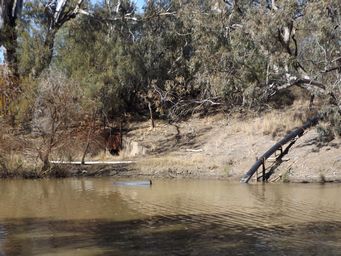
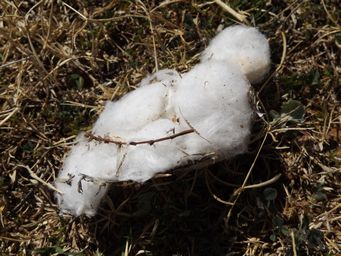
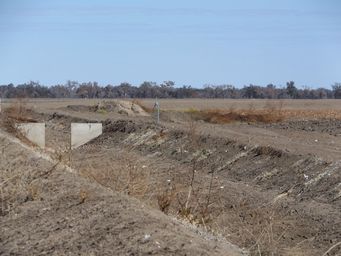
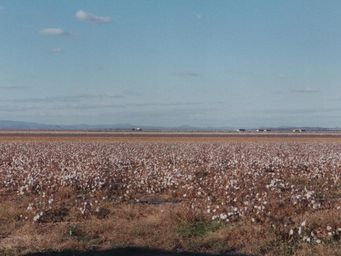
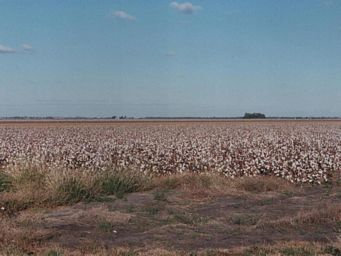
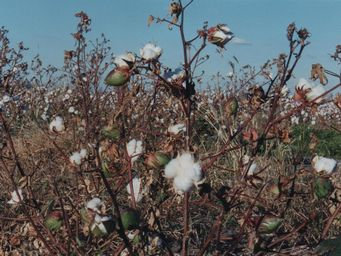
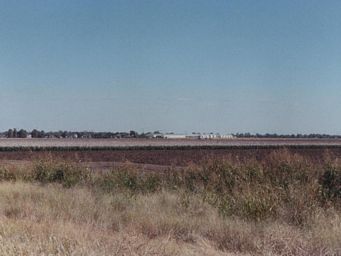
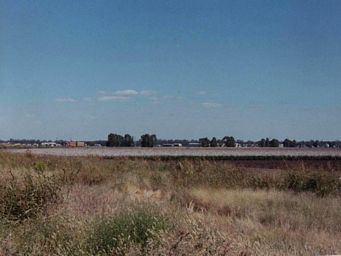
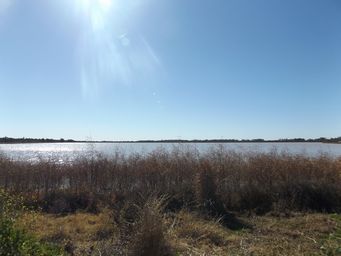
Photo: Namoi Cotton gin at Wee Waa in New South Wales
In Queensland, most cotton is grown in the south in the Darling Downs, St George, Dirranbandi and Macintyre Valley areas, with the
remainder is grown near Emerald, Theodore and Biloela in Central Queensland.
In New South Wales, cotton growing areas are mostly
from the Macintyre River on the Queensland border including the Gwydir, Namoi and Macquarie valleys, and along the Barwon and Darling
Rivers in the west, and the Lachlan and Murrumbidgee rivers in the south.
Australia produces around 3% of the world’s cotton
but is the third largest exporter, behind the USA and India, with more than 90% of cotton grown being exported. The major buyers
of Australian cotton are currently China (30 percent), Bangladesh, Vietnam, India, Indonesia, Turkey and Thailand (source: Australian
Cotton Shippers Association, 2018).
You will know when you are coming into a cotton region from the cotton wool like pieces of cotton dropped from the loads along the edges of the roads.
The cotton is mechanically harvested and rolled into large rolls around the size of hay rolls, with a wrap around the rolls but not covering the sides.
These are trucked to the cotton gins for cleaning and seed removal.
In a year with plentiful water, around 550,000 hectares of cotton are planted with potential production of over four million bales and a value of more than $2 billion. Most of the Australian crop is grown under irrigation.
Channels and paddocks at right following
harvest.
Cotton dams (earth tanks). When in cotton growing areas, you will see many huge rectangular earth tanks, sometimes the wall
is one or two kilometres long. Water is pumped and stored in these, from rivers and from harvesting rain run-off.
I climbed the bank of one to see this lake sized expanse of water (above left). This has a large pumping station to draw water from the Baron River.
Water extraction point on the Barwon River near Mungindi (above right).
At Narrabri, cotton harvesting with cotton gin in background (above left). See cotton growing calendar.
Namoi Cotton was established in 1962 as a grower owned cooperative in Wee Waa, New South Wales by a small group of pioneering cotton
growers. In 2017, Namoi Cotton become Namoi Cotton Limited, a fully ASX listed public company
In the first year of operations,
the original Wee Waa cotton gin processed 98 bales of cotton. Namoi Cotton is now capable of processing 1.6 million bales of raw seed
cotton, and exporting more than 1.2 million bales annually.
Namoi Cotton has twelve operational cotton gins located from Goondiwindi,
Queensland through to Hillston, New South Wales. These gins are capable of processing 84,000 cotton bales per week. A pressed
bale of cotton weights 227 kilograms.
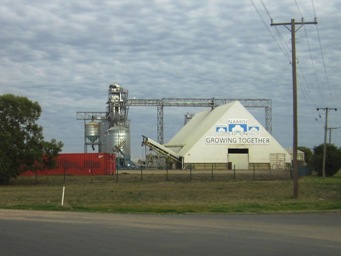
The ginning process removes the seeds and other matter from the cotton lint (fibres). In addition to cotton seed being
saved for planting future crops, cotton seed is crushed for oil, which can be used in
the manufacture of products such as vegetable
oil, margarine, soap and cosmetics. Inferior seeds and hulls can be used in stock feed.